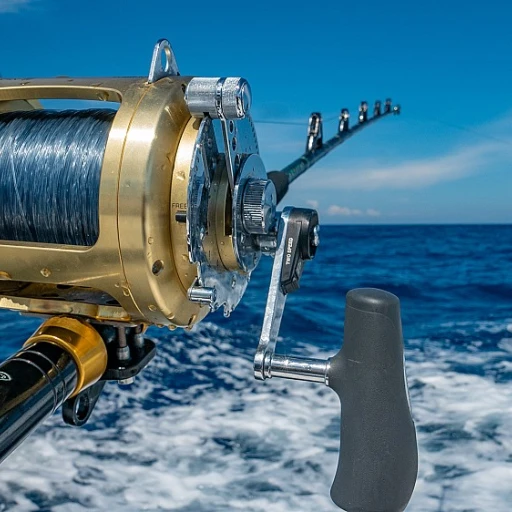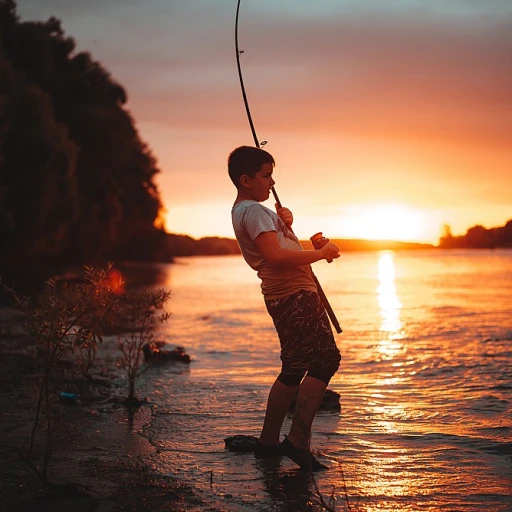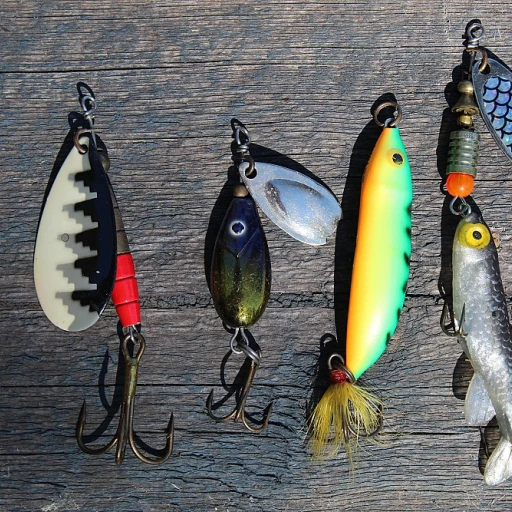
Mekong giant catfish: the behemoth of Southeast Asia
Mekong giant catfish: nature's freshwater titan
Let's dive into the fascinating world of the Mekong giant catfish, one of the biggest catfish species on the planet. Originating from the mighty Mekong River in Southeast Asia, these giant fish are a marvel of nature. They are known for reaching enormous sizes, often making anglers and fish enthusiasts drop their jaws in awe. The Mekong giant catfish, Pangasianodon gigas, is famous for being one of the largest freshwater fish in the world. They're native to the Mekong river system, which flows through countries like Cambodia, Thailand, Laos, and Vietnam. According to the International Game Fish Association (IGFA), the heaviest Mekong giant catfish ever recorded weighed an astonishing 646 pounds and was caught in northern Thailand (National Geographic).A biologist's insight
Dr. Zeb Hogan, a renowned ichthyologist and host of National Geographic's “Monster Fish,” has dedicated much of his career to studying these giants. He notes, “The Mekong giant catfish is not just a fish, it's an icon of the Mekong River and its unique biodiversity.” These catfish can grow up to 10 feet long and are known for their rapid growth rates, reaching over 400 pounds within six years.Life in the mekong
Living in the turbulent waters of the Mekong River, these fish have adapted to a challenging environment. They migrate vast distances to spawn and feed, which has unfortunately been disrupted by dam construction and overfishing. Conservationists like Hogan are working tirelessly to protect the Mekong giant catfish and ensure its survival for future generations.Challenges and conservation
Sadly, the Mekong giant catfish is critically endangered. Habitat loss and overfishing have pushed this majestic species to the brink of extinction. Scientists, conservationists, and local communities must collaborate to create effective conservation strategies. Educating locals on the importance of sustainable fishing practices can help preserve the Mekong giant catfish and the riverine ecosystem. Catfish enthusiasts and researchers worldwide are invested in the preservation of these incredible creatures. If you're curious about the biggest fish ever caught, check out some other record-breaking catches that have left their mark in the fishing community.Wels catfish: Europe's freshwater giant
The wels catfish: Europe's freshwater giant
As you cross the vast rivers and lakes of Europe, you'll encounter one of the most fascinating and formidable catfish species, the wels catfish (Silurus glanis). Known for its impressive size and weight, this giant has captured the imagination of anglers and researchers alike.
Size and distribution
The wels catfish can be found in various parts of Europe, including countries like Spain, Italy, and Germany. This species prefers large, slow-moving rivers, lakes, and reservoirs. On average, wels catfish can grow up to 13 feet long and weigh over 300 pounds. According to a report by the International Game Fish Association (IGFA), the wels catfish holds several world records for both length and weight.
Notable catches
One of the most famous wels catfish catches occurred in Italy, where Alessandro Biancardi landed a massive specimen measuring 8.7 feet (262 cm) and weighing 297 pounds (135 kg). This catch was measured in detail and verified by local authorities, making it one of the largest ever recorded. Another remarkable catch took place in Spain, where a 280-pound wels was caught in the Ebro River.
Fishing techniques
Anglers targeting wels catfish often use robust tackle and large bait. Shimano reels spooled with 80-pound Trilene line are a popular choice. Heavy-duty rods and large hooks are essential to handle these powerful fish. Night fishing is particularly common since wels catfish are more active after dark. It’s important to be prepared, as these giants put up a formidable fight, making for an exhilarating fishing experience.
Conservation and challenges
While the wels catfish is an apex predator and plays a crucial role in the aquatic ecosystem, there are concerns about overfishing and habitat destruction. Conservation efforts are essential to protect this magnificent species for future generations. Authorities in some regions have implemented catch-and-release regulations to help conserve wels catfish populations.
For more about impressive fish species, take a look at this biggest goliath grouper ever caught.
Blue catfish: North America's heavyweight
North America's heavyweight: meet the blue catfish
The blue catfish (Ictalurus furcatus) stands as the heavyweight champion of North American waters. This species, native to the Mississippi, Missouri, and Ohio river basins, is renowned for its sheer size and fighting spirit. It's no surprise that blue catfish are a favorite among anglers seeking a challenge. A blue catfish can reach remarkable lengths and weights. The largest recorded blue catfish was caught in Virginia's Kerr Lake by Richard Nicholas Anderson back in 2011. The fish weighed a jaw-dropping 143 pounds and measured about 57 inches long. This record catfish caught has held its position for over a decade, showcasing the immense potential these giants possess. According to the International Game Fish Association (IGFA), blue catfish have a lifespan that allows them to grow exponentially if given the right conditions. They thrive in deep, slow-moving rivers and reservoirs where they can feed on a variety of prey, from fish to crustaceans. Such a diet contributes significantly to their massive size. Fishing for blue catfish demands specialized gear and techniques. Many anglers opt for heavy-duty rods paired with Shimano reels spooled with strong pound-test Trilene line to handle the weight and power of these giants. Live baits such as shad or herring are popular choices, and techniques like drift fishing and anchored fishing are commonly employed. Anglers should be prepared for a lengthy battle, as blue catfish are known to put up an intense fight. The presence of blue catfish in different water bodies has also raised some ecological concerns. While they provide an exciting fishing experience, their introduction into non-native waters, such as the James River in Virginia, has been controversial. They are considered invasive in some regions due to their profound impact on local ecosystems. Efforts are underway to manage their populations and mitigate negative effects. From a conservation perspective, organizations like the National Geographic are documenting the significance of balancing blue catfish populations while preserving the health of aquatic ecosystems. Anglers can contribute to conservation by practicing catch-and-release and supporting regulations aimed at protecting these magnificent creatures. In the broader picture of catfish species, blue catfish hold a significant place not only due to their size but also because of their cultural and ecological impact. They have become a notable symbol of North America's freshwater fishery, reflecting both the challenges and thrills of angling for such legendary fish. If you're interested in more freshwater giants, don't miss reading about the incredible journey of the world record gar.Fishing for giants: techniques and tackle
Essential gear and tackle for landing the big ones
Get ready, fishing enthusiasts—landing some biggest catfish species requires serious gear and know-how. Whether you're aiming for the gigantic Mekong giant catfish in Southeast Asia, Europe's mammoth wels catfish, or North America's colossal blue catfish, you'll need the right tools to stand a chance.
Rod and reel: foundational tools
When it comes to rods, go for strength and durability. Heavy to extra-heavy rods are ideal for these giant catfish species. For instance, consider a Shimano rod coupled with a Shimano reel spooled with at least 100-pound Trilene. These catfish can put up a mean fight, so you need something that won't buckle under pressure.
Line and hooks: no cutting corners
No skimping on the fishing line, either. Despite blue catfish breaking records at over 100 pounds, lightweight lines just can't cut it. Investing in a braided line with a minimum of 80 pounds test strength is a must. As for hooks, opt for large circle hooks. They're not only efficient in snagging but also help in minimizing harm to the fish.
Baiting strategies: keep it fresh
What you use for bait can be a game-changer. For channel catfish and bullheads, try fresh cut bait like shad or bluegill. These fish go crazy for live bait too. On the other hand, for the gigantic mekong giant catfish in Thailand, they are often caught using a mix of rice bran, coconut milk, and sometimes bananas!
Navigational tools and electronic aids
Believe it or not, technology can make a significant difference. Use fish finders and sonar to locate catfish that tend to lurk in the deepest parts of the rivers. Fishing in the mekong river demands pinpoint accuracy, as these giants often hover around submerged structures or deeper pools.
Preparation and patience: the untold heroes of fishing
Finally, bring patience. Successful catfishing can take hours, sometimes even days. Alessandro Biancardi, who set the IGFA tackle record pound with his impressive 9-foot-long wels catfish in Italy, emphasizes that patience is equally as important as your fishing tackle. Prepare well, but remember: catching these giants is as much about waiting as it is about fishing.
Record-breaking catfish: tales from the water
Legendary catches: the ultimate stories of giant catfish
When it comes to breaking records in the catfishing world, it's a wild ride filled with excitement, awe, and a bit of envy. These catfish don't just break records—they shatter them! Here are some record-breaking tales that have left the fishing community speechless.
Alejandro Coronel's Mekong marvel
In 2005, Alejandro Coronel stunned the world with his catch of a 646-pound Mekong giant catfish in Thailand. This monster catfish still holds the record as the largest freshwater fish ever caught. The fish measured 9 feet long and had a girth of 4.9 feet! Coronel's catch wasn't just a personal victory; it was a groundbreaking moment for catfish anglers everywhere, showcasing the raw power and size these giants can achieve (National Geographic).
Alessandro Biancardi's wels wonder
Europeans proudly hail Alessandro Biancardi, who caught an incredible wels catfish in the River Po, Italy. In May 2023, Biancardi landed a catfish weighing a staggering 297 pounds and measuring over 9 feet long. This exceptional catch set a new world record for wels catfish and further cemented the reputation of Italy's rivers as prime hunting grounds for these aquatic behemoths. Wels catfish, known for their fierce fight, gave Biancardi a battle to remember.
Blue catfish: North America's giants
North America is no stranger to catfish giants, especially with the blue catfish reigning supreme. The current IGFA (International Game Fish Association) record is held by Richard Anderson, who caught a 143-pound blue catfish in Virginia's Kerr Lake. This 2011 catch was measured at 57 inches long with an impressive 47-inch girth. Anderson's triumph was a testament to the relentless spirit of catfish anglers and the untamed waters of North America.
Unique tales and lesser-known records
While the heavyweights get most of the attention, there are plenty of lesser-known records that are equally fascinating. For example, the record for the largest black bullhead belongs to a 10.4-pound fish caught in Arizona's Bartlett Lake. Similarly, the channel catfish record is held by a 58-pound catch from the Santee-Cooper Reservoir in South Carolina.
Controversies and near misses
The world of record-breaking catfish isn't without its controversies. There have been countless claims and near-misses that have stirred up debates. One such story involves a supposed 300-pound wels catfish from Spain's River Ebro that was never officially verified due to lack of proper documentation and measurements. These controversies highlight the importance of following strict IGFA guidelines when it comes to verifying record catches.
The future of giant catfish
As technology and techniques improve, anglers are better equipped than ever to target and land these underwater giants. Shimano reels spooled with high-pound Trilene lines, along with advancements in rod technology, have made it increasingly possible to tackle these large fish. It's only a matter of time before we see old records broken and new stories being crafted.
Conservation and challenges: protecting the giants
The importance of habitat preservation
The biggest catfish species, like the Mekong giant catfish and the wels catfish, face serious threats due to habitat destruction. The mekong giant catfish, for instance, is critically endangered, largely due to dam construction in Southeast Asia's Mekong River. This species is well-known for its astonishing size, sometimes reaching up to 660 pounds and measuring 9 feet in length (source: National Geographic). The situation isn't much different for the wels catfish in Europe; pollution and habitat fragmentation have significantly impacted their populations.Overfishing: a critical issue
Overfishing remains a persistent problem, particularly in regions like South America, the Amazon River, and parts of China. Giant catfish caught either commercially or for sport fishing can disrupt local ecosystems and deplete populations. The International Game Fish Association (IGFA) has documented numerous record-breaking catches, often highlighting how overfishing threatens these freshwater giants. The mekong river has witnessed a sharp decline in mekong giant catfish due to overfishing and illegal fishing practices.Regulations and sustainable practices
Implementing strict regulations and promoting sustainable fishing practices are vital. Countries like Thailand and Italy have made strides in creating conservation programs. According to a report by the World Wildlife Fund, such programs are crucial for the survival of the largest freshwater fish. Fishing enthusiasts must adhere to these regulations and use appropriate tackle to minimize harm. For example, a rod and Shimano reel spooled with a pound test Trilene line can be effective without causing unnecessary injury to the fish. These practices ensure that species like the blue catfish, channel catfish, and even the black bullhead can thrive for generations to come.Community involvement and education
Community involvement and education play significant roles in conservation efforts. Organizations and researchers often collaborate with local communities to establish sustainable fishing zones and educate the public on the importance of preserving catfish species. Alessandro Biancardi, a renowned geneticist and catfish researcher, has been instrumental in developing community-based conservation programs in Central and Eastern Europe.Technological and scientific advancements
Recent technological advancements have shown promise in conservation. Satellite tagging and genetic studies help scientists track catfish movements and understand their breeding patterns better. Efforts led by National Geographic in various regions, including the Amazon and Southeast Asia, have provided valuable insights into catfish behavior and habitat requirements.Global cooperation in conservation
Successful conservation of these freshwater giants requires global cooperation. International bodies like the IGFA and conservation organizations in Africa, Japan, and Florida are essential in setting guidelines and funding research. Cross-border collaborations among countries where catfish species like the wels, blue, and mekong giant catfish are found can lead to more comprehensive strategies. For a closer look at what does a catfish look like? A detailed guide to identifying different species, be sure to check this detailed breakdown on catfish identification.Catfish around the world: a global perspective
Catfish species in South America
South America is home to an impressive variety of catfish, with the Amazon River being a prime habitat for some of the largest and most intriguing species. Notably, the Redtail Catfish (Phractocephalus hemioliopterus) is a standout. Known for its distinctive red tail and massive size, this species has been recorded reaching more than 60 inches long and weighing up to 180 pounds.
Africa's majestic catfish
Africa isn't left behind either when it comes to colossal catfish. The Vundu Catfish (Heterobranchus longifilis), found predominantly in rivers like the Nile and Zambezi, can grow over 60 inches long and weigh up to 130 pounds. These giants are known for their voracious appetite and strength, making them a challenging catch for anglers.
Asia's giants beyond the Mekong
While the Mekong Giant Catfish often steals the spotlight, other Asian catfish species also deserve recognition. The Wallago Leeri, found in the freshwater bodies of Southeast Asia, can grow up to 8 feet long and weigh over 220 pounds. In regions such as Thailand and parts of India, these fish are a crucial part of local fishing traditions and cultures.
Europe's diverse catfish
In Europe, apart from the famed Wels Catfish, the Black Bullhead (Ameiurus melas) and Yellow Bullhead (Ameiurus natalis) are also significant. While not as large as the Wels, these species are still noteworthy. The Black Bullhead typically measures around 20 inches long and weights 5 pounds, while the Yellow Bullhead, slightly smaller, comes in at about 14 inches long and 2 pounds.
North America's catfish variety
Blue Catfish, Channel Catfish, and Bullheads dominate the North American scene. The Blue Catfish, the heavyweight of the bunch, has been caught weighing up to 143 pounds and measuring over 57 inches long. The Channel Catfish, on the other hand, is known for its widespread presence across lakes and rivers in the United States, usually growing up to 40 pounds.
Fishing destinations and tips
For those looking to tackle these giant catfish species, the right fishing spots and techniques are crucial. The Mississippi River is a top destination for Blue Catfish, while the Mekong River in Southeast Asia is unparalleled for the iconic Giant Catfish. Utilizing heavy-duty rods and reels, such as a Shimano reel spooled with at least 50 pound test line, is recommended to withstand the sheer power of these fish.
Expert insights: interviews with catfish researchers
Dr. Alessandro Biancardi on the giant catfish
When it comes to understanding the intricate world of the biggest catfish species, one name stands out: Dr. Alessandro Biancardi. An established researcher in this field, Dr. Biancardi has devoted years to studying these aquatic behemoths. According to Dr. Biancardi, the mekong giant catfish (Pangasianodon gigas), found primarily in the Mekong River, can grow to a stunning length of up to 10 feet and weigh over 600 pounds. 'The mekong giant catfish represents not just a marvel of nature but also a critical species for the biodiversity of Southeast Asia,' Dr. Biancardi noted in a recent interview.
Insights into wels catfish behavior by Dr. Andrea Pini
In Europe, the wels catfish (Silurus glanis) reigns supreme. Dr. Andrea Pini, a wildlife biologist from Italy, has extensively studied the habitats and behavior of wels catfish. According to Pini, these giants can be found in rivers and lakes across central and eastern Europe. They can grow up to 13 feet long, with recorded weights reaching over 660 pounds. Pini stated, 'Wels catfish are incredibly adaptable and have been known to exhibit unique behaviors, such as hunting birds and mammals on the water surface.' This adaptability has made them a subject of fascination and concern for researchers across Europe.
Techniques for targeting blue catfish: John Johnson's advice
Over in North America, the blue catfish (Ictalurus furcatus) holds the record for the largest freshwater fish found on the continent. John Johnson, an experienced angler and fishing guide from Mississippi, shared his expertise on targeting these giants. 'Blue cats prefer deep river channels and large reservoirs,' Johnson explained. 'Using heavy tackle with a strong rod and reels spooled with 50-pound Trilene line is crucial for hooking these heavyweights.' Johnson's advice has helped many anglers, including those looking to break existing records. One notable catch was a blue catfish weighing 143 pounds caught in Virginia.
The global impact of catfish research: Dr. Yuki Nakamura's findings
Catfish are not just of local interest; they have global significance. Dr. Yuki Nakamura from Japan has been researching the global distribution and impact of various catfish species. Dr. Nakamura stated, 'All over the world, from the Amazon River in South America to the rivers of China, catfish play an essential role in local ecosystems and cultures.' Her research emphasizes the importance of understanding these species to protect freshwater biodiversity worldwide. 'Catfish are both a valued resource and a conservation priority,' Nakamura added.
Conservation efforts and challenges: Gerald Stafford's perspective
Conservation biologist Gerald Stafford from Florida highlights the challenges in conserving these giant species. According to Stafford, habitat destruction and overfishing pose significant threats. 'In the Mekong River, dam construction has severely impacted the mekong giant catfish population,' Stafford reported. Despite these challenges, efforts are being made to protect these giants. 'Community engagement and international cooperation are key components of successful conservation strategies,' Stafford remarked, emphasizing the global effort needed to safeguard these magnificent creatures.

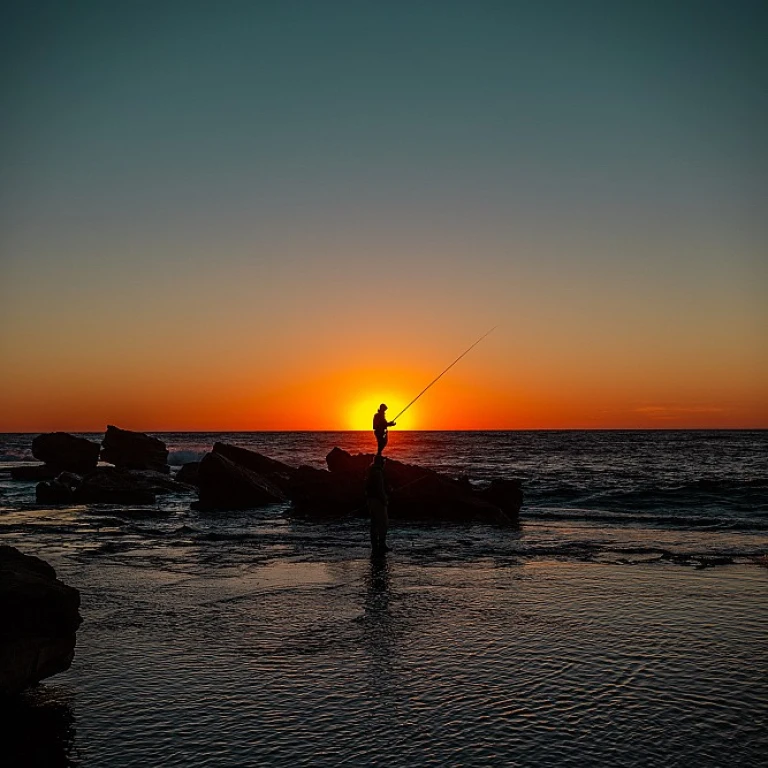


-large-teaser.webp)
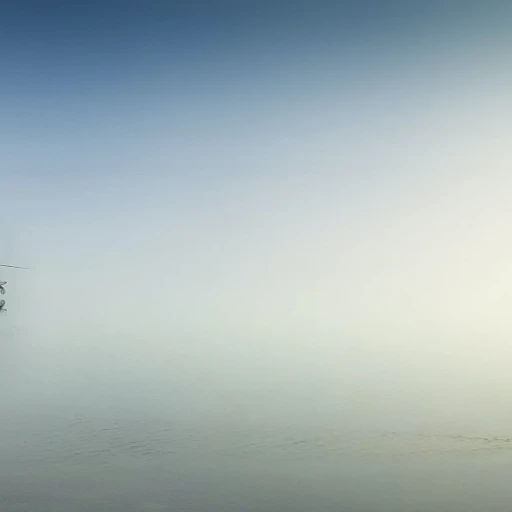
-large-teaser.webp)
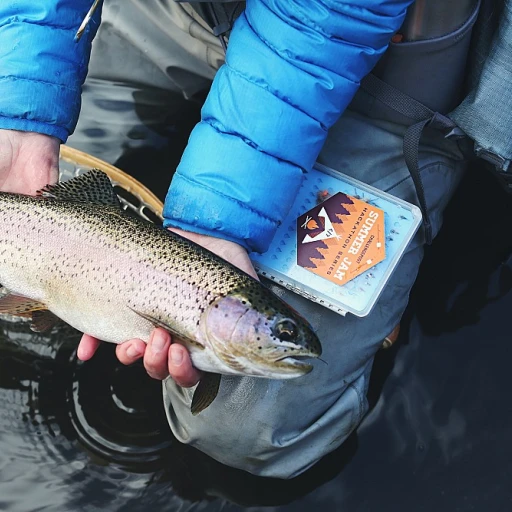
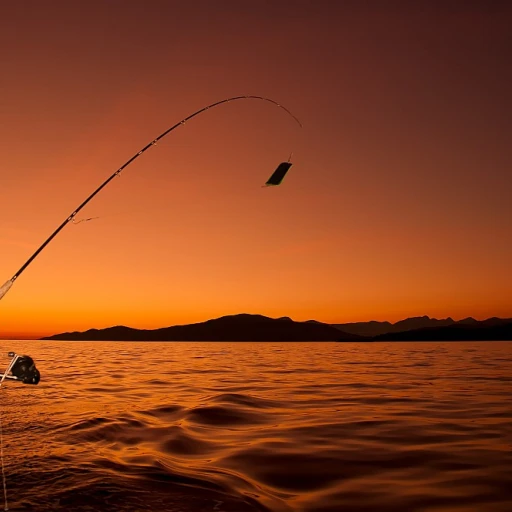
-large-teaser.webp)
-large-teaser.webp)
